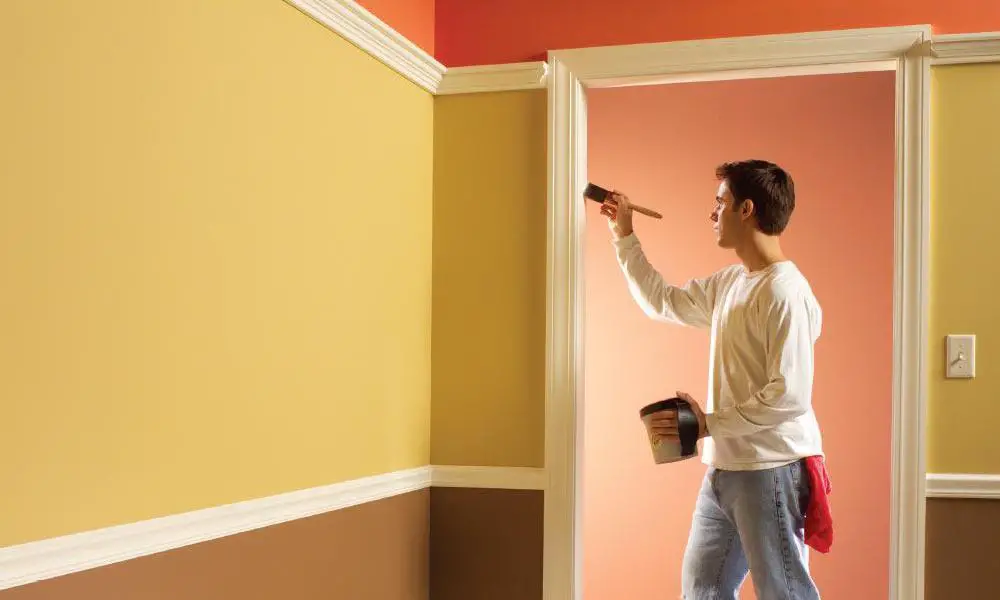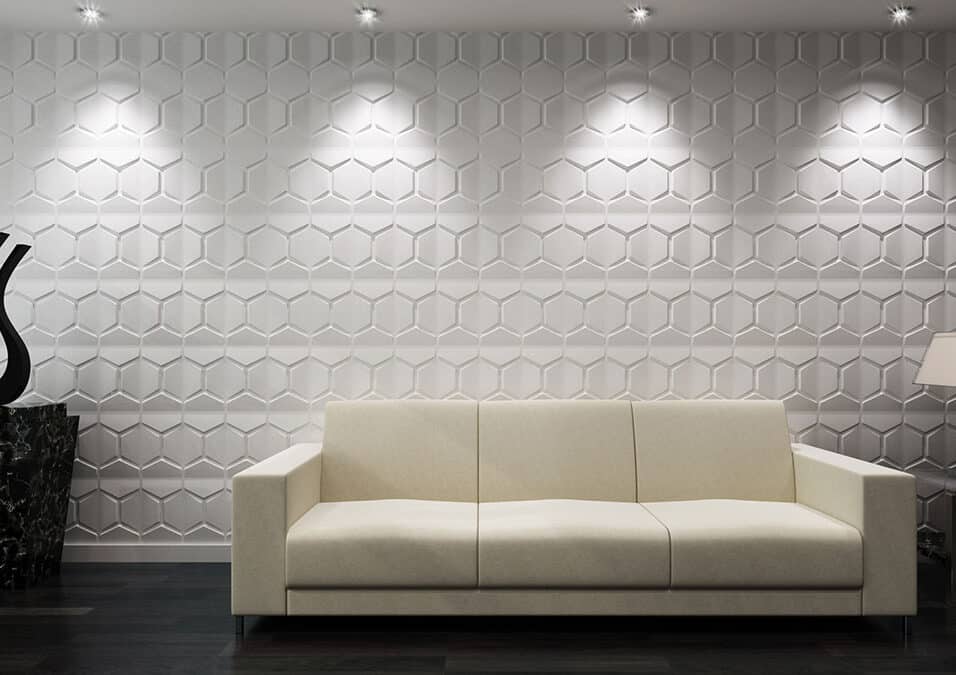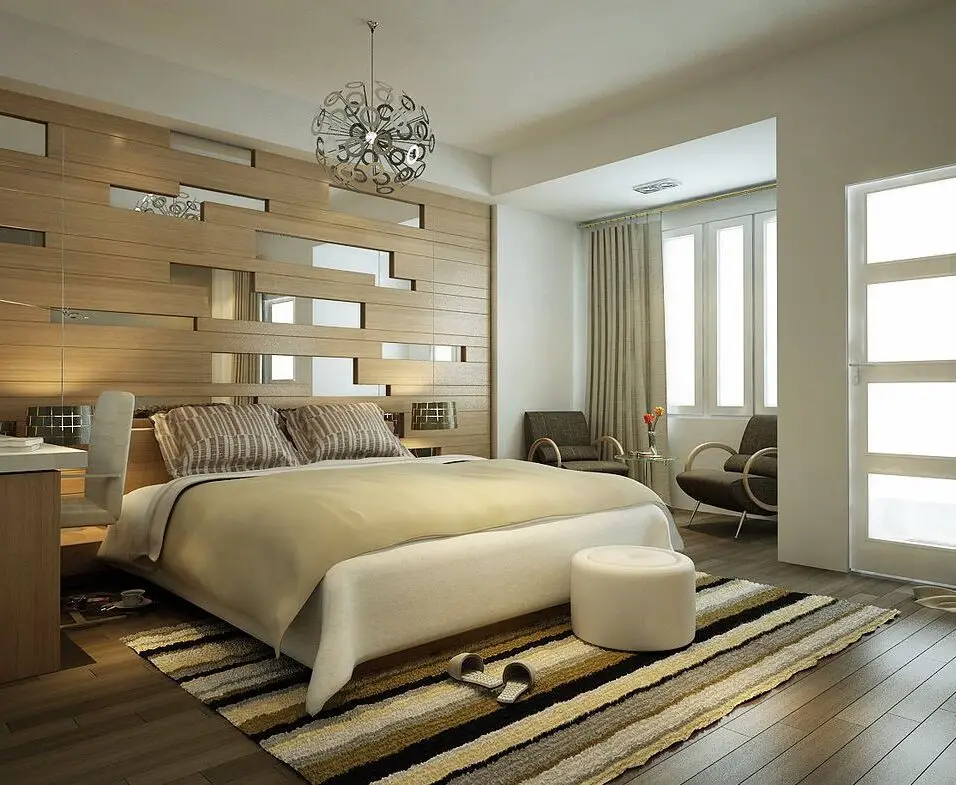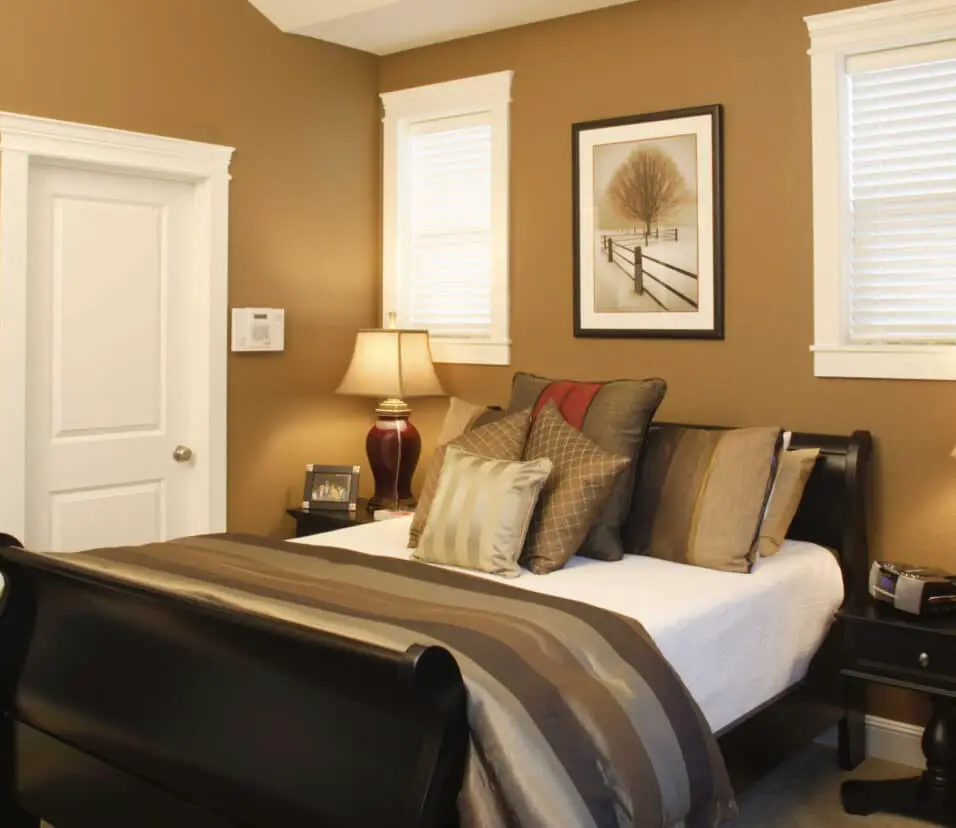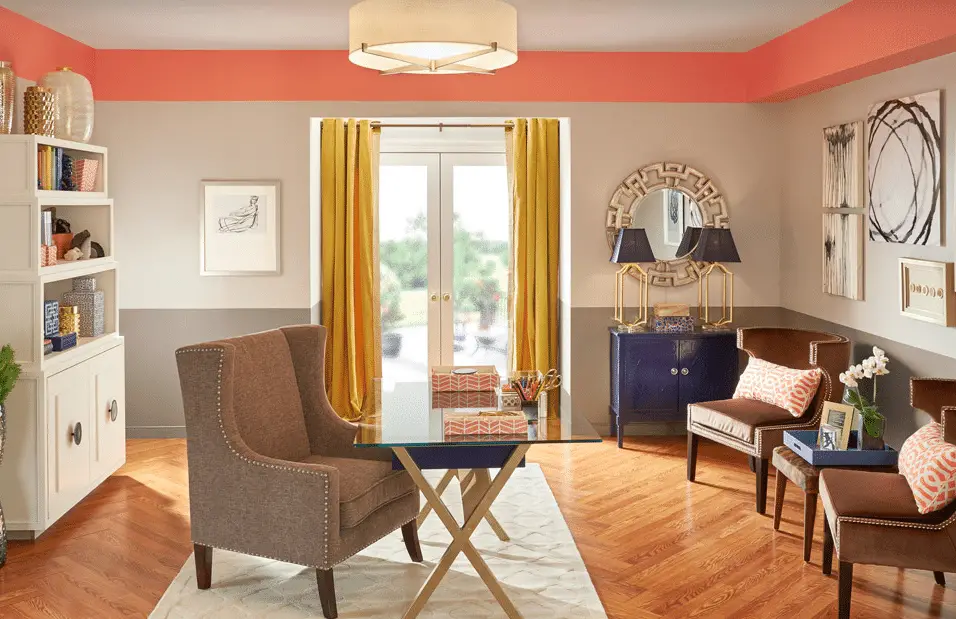How Long Does It Take To Paint Interior Of House
Introduction
How Long Does It Take To Paint Interior Of House: The question on everyone’s mind—how long does it take to paint the interior of a house?—unveils a process that blends artistry with practicality, resulting in homes that reflect both beauty and functionality.
Painting the interior of a house is an exciting endeavor that brings new life to your living spaces. Whether you’re embarking on a refreshing makeover or personalizing a new home, understanding the timeline involved is essential for a smooth and satisfying experience. From selecting the perfect paint shades to seeing the final strokes of the brush, every step holds the promise of a home transformed.
In this comprehensive guide, we delve beyond the surface and explore the factors that influence the duration of an interior paint project. From the size and complexity of rooms to the type of paint chosen, each decision contributes to the overall timeline. We unravel the mysteries of preparation, painting techniques, drying times, and the final touches that culminate in a stunning transformation.
Our exploration extends beyond the practicalities, touching on the emotions that infuse every brushstroke. The anticipation of change, the patience required for drying, and the gratification of witnessing interior walls come alive—all are part of the narrative that unfolds when you embark on an interior painting journey.
Join us as we navigate the art and science of interior house painting, providing insights that empower you to make informed decisions, plan effectively, and appreciate the dynamic fusion of creativity and craftsmanship. Your voyage into the world of paint and possibility begins here.

Can you paint the interior of a house in one day?
Painting the entire interior of a house in one day is typically not realistic for most homes.
The time required to paint a house interior depends on various factors:
Size of the House: Larger homes will naturally take longer to paint than smaller ones.
Number of Rooms: Each room, including ceilings, walls, and trim, requires time and attention.
Preparation: Properly preparing surfaces by cleaning, patching, and priming can be time-consuming.
Number of Coats: Some colors or surfaces may require multiple coats for even coverage.
Drying Time: Paint needs time to dry between coats.
Skill Level: Experienced painters may work faster than those with less experience.
Furniture and Obstacles: Moving furniture and dealing with obstacles can slow the process.
It’s usually a multi-day project, especially if you want a high-quality finish. Rushing through the job in one day can lead to subpar results. Planning, preparation, and patience are essential for a successful interior painting project.
How long does it take to paint a 3 bedroom house?
While this is a rough guide to how long it should take to paint a 3-4-bedroom home, you could probably paint a whole bedroom in an hour if you rushed, or 2 days if you really took your time. While we say it can take 3-4 days to paint an average 3-4-bedroom home you will need to consider all the above factors.
The time it takes to paint a 3-bedroom house can vary widely depending on several factors:
- Size of the House: The square footage of the house will significantly impact the time required. A larger house will naturally take longer to paint.
- Number of Rooms: The number of bedrooms is just one consideration.
- Ceilings, Walls, and Trim: If you plan to paint ceilings, walls, and trim, each of these elements adds time to the project.
- Preparation: Properly preparing the surfaces, which includes cleaning, patching, sanding, and priming, can be time-consuming.
- Number of Coats: Some colors or surfaces may require multiple coats for even coverage.
- Drying Time: Paint needs time to dry between coats.
- Skill Level: Experienced painters may work faster than those with less experience.
- Team Size: If you have a team of painters, the work can be completed more quickly than if you’re doing it alone.
As a rough estimate, it might take several days to a week or more to paint the interior of a 3-bedroom house thoroughly, depending on these factors. It’s essential to plan the project carefully, allocate enough time, and ensure you have the right materials and tools for the job to achieve a high-quality finish.
How many days should it take to paint a house?
The size of your home will inevitably contribute to the project’s completion time. An average-size house will take an average of three to four days to paint with a team of two to three people.
The number of days it takes to paint a house can vary widely based on several factors, including the size of the house, the number of rooms, the complexity of the project, the number of painters, the type of paint being used, and the level of preparation required. Here’s a general guideline to give you an idea:
Small to Medium-Sized House: For a smaller house with 1-2 bedrooms and fewer rooms, a professional painting crew might be able to complete the project in about 3-5 days.
Medium to Large House: A medium-sized house with 3-4 bedrooms and more rooms might take around 5-7 days to complete, assuming a team of painters is working.
Large or Complex House: Larger houses with more rooms, higher ceilings, intricate details, or special techniques (such as accent walls or patterns) can take 7 days or longer to paint.
Additional Factors: Keep in mind that factors such as the need for extensive surface preparation, multiple coats of paint, drying times between coats, and weather conditions (for exterior painting) can all impact the timeline.
It’s important to note that these are approximate estimates and can vary based on individual circumstances. DIY projects might take longer due to limited time availability, while professional painting crews can work more efficiently. Always consider the scope of the project and consult with professional painters to get a more accurate estimate based on your specific needs.
Proper preparation, attention to detail, and quality work are key to achieving the best results, regardless of the time it takes.
How long does it take to paint 4 rooms?
On average, it takes 5 to 7 hours to paint a room. This figure is for an average 120 square feet room and includes time spent prepping the room for painting, performing details, and cleaning up. If you prepare, you can easily paint a room in one day.
The time it takes to paint four rooms can vary depending on several factors, including the size of the rooms, the complexity of the painting job, and your level of experience. As a rough estimate, it might take anywhere from a couple of days to a week or more to paint four rooms thoroughly.
Here are some factors that can influence the time needed:
Room Size: Larger rooms will naturally take longer to paint than smaller ones.
Number of Coats: Some rooms may require multiple coats of paint for complete coverage, which adds time to the project.
Preparation: Properly preparing the surfaces by cleaning, patching, sanding, and priming can be time-consuming.
Ceilings, Walls, and Trim: If you’re painting all these elements in each room, it will take more time.
Drying Time: Paint needs time to dry between coats.
Skill Level: Experienced painters may work faster than those with less experience.
Team Size: If you have a team of painters, you can complete the job more quickly.
It’s essential to plan the project carefully, allocate enough time, and ensure you have the necessary materials and tools to achieve a high-quality finish.
Can you paint a house in a week?
And while painting a house can be a big job, it’s a project that can be completed in a week or two. If you hire a professional painter, expect to pay around $3,073 for a 1,500-square-foot home, while a larger home could cost as much as $13,000, according to HomeAdvisor.
Yes, it is often possible to paint a house within a week, but the feasibility depends on various factors including the size of the house, the number of rooms, the number of painters, the complexity of the project, and the type of paint being used. Here are some considerations:
Size of the House: Smaller houses with fewer rooms can typically be painted within a week. Larger houses with more rooms might require additional time.
Number of Painters: The more painters working on the project, the faster it can be completed. Professional painting crews can work together to expedite the process.
Preparation: Adequate surface preparation, including cleaning, patching, and priming, is essential for a quality finish. This preparation might add to the overall timeline.
Drying Times: Drying times between coats of paint can impact the timeline.
Exterior vs. Interior: Exterior painting might be affected by weather conditions, which could extend the timeline if there’s rain or high humidity.
Complexity: Intricate details, high ceilings, multiple stories, and special techniques (such as faux finishes) can extend the painting timeline.
Type of Paint: Some paints have shorter drying times and might allow for quicker application of multiple coats.
Efficiency and Experience: Professional painters with experience can work more efficiently, potentially completing the project faster.
In many cases, a well-organized and experienced painting crew can complete the painting of a typical house within a week. Always prioritize quality workmanship and proper preparation, as rushing through the process can lead to unsatisfactory results.
What is the best time to paint house interior?
winter
Because there is less humidity, your paint will dry noticeably faster and better in the colder months, winter is the best time for painting the exterior or the home’s interior. Don’t wait for the hot temperature, high humidity months.
The best time to paint the interior of a house is typically during moderate weather conditions, as extreme temperatures and humidity can affect the paint’s drying and curing process. Here are some considerations for choosing the best time:
Spring and Fall: These seasons are often ideal for interior painting. The temperatures are moderate, and humidity levels are relatively stable, creating favorable conditions for paint to dry and cure properly.
Avoid Extreme Heat: It’s best to avoid painting during the hottest summer months, as excessive heat can cause paint to dry too quickly, leading to potential issues like brush marks and uneven coverage.
Avoid Extreme Cold: Extremely cold temperatures can also be problematic, as they can slow down the drying process and make it challenging to ventilate the area.
Ventilation: Good ventilation is essential when painting indoors. You should be able to open windows and doors to allow fresh air to circulate.
Low Humidity: High humidity levels can extend drying times and potentially cause paint to blister. So, choose a time when the humidity is relatively low.
Weekdays: If possible, plan your painting project for weekdays when you have more consistent energy and time. This avoids interruptions that may occur on weekends.
Consider Your Schedule: Consider your personal schedule and commitments. Choose a time when you can dedicate uninterrupted hours to the project.
Remember that the best time to paint may vary depending on your location and local climate. It’s also important to follow the specific instructions provided by the paint manufacturer for the type of paint you’re using. Proper preparation and attention to environmental factors will help ensure a successful interior painting project.
How long does it take to paint a ceiling?
It takes, on average, about 30 minutes to paint the ceiling in an average-sized room. This does not include prep work, such as taping off trim, laying drop cloths or moving furniture.
The time it takes to paint a ceiling can vary depending on several factors, including the size of the ceiling, the condition of the surface, the type of paint being used, the number of coats required, and your experience level. Here are some general estimates:
Size of the Ceiling: Smaller ceilings, such as those in a standard-sized room, might take a few hours to complete. Larger ceilings, such as those in open living areas or high-ceilinged rooms, could take longer.
Surface Preparation: Proper preparation is essential for a smooth finish. This includes cleaning the ceiling, patching any imperfections, and applying primer if necessary. Preparation can add several hours to the timeline.
Paint Application: The actual time it takes to paint the ceiling will depend on your technique, tools, and experience. Using a roller on an extension pole is the most common method. A standard coat of paint might take around 30 minutes to an hour to apply.
Drying Time:
Drying times between coats can vary depending on the type of paint used. Water-based paints generally dry faster than oil-based ones.
Number of Coats: Depending on the color and type of paint, you might need to apply more than one coat for even coverage. Each coat adds to the overall time.
Cuts and Edges: Cutting in around the edges of the ceiling, near walls and fixtures, takes additional time and attention to detail.
As a rough estimate, painting a standard-sized room’s ceiling might take around 2 to 4 hours for a single coat. Larger or more complex ceilings could take longer. If you’re painting multiple coats, you’ll need to factor in additional drying time between coats.
It’s important to remember that rushing through the painting process can lead to unsatisfactory results. Taking your time, applying even coats, and allowing proper drying time will help you achieve a professional-looking finish. If you’re unsure about how long the project will take, it’s a good idea to allocate more time than you think you’ll need to ensure quality work.
How many coats of paint on ceiling?
Follow these guidelines for every kind of paint job: One coat for ceilings (high-quality paint) if it’s the same colour, but two if it’s textured material or a different colour. Two coats plus one extra coat of primer for newly plastered walls or drywalls.
In most cases, you’ll need at least one coat of paint, but some situations may require two or more coats. Here are some considerations:
Ceiling Condition: If the ceiling is in good condition, with no stains or discoloration showing through, one coat of paint is often sufficient.
Type of Paint: The type of paint you use can affect coverage. High-quality paints with good coverage properties may require only one coat. Cheaper or lower-quality paints might need additional coats for even coverage.
Desired Finish: If you’re aiming for a flawless, uniform finish, applying a second coat can help achieve that. It can help hide minor imperfections and create a more durable and consistent appearance.
Color Change: If you’re changing the ceiling color significantly, a second coat can be necessary to completely cover the old color and achieve the desired new color.
Primer: Using a primer before painting can improve coverage and may reduce the number of paint coats needed.
In general, start with one coat of paint on the ceiling and assess the results. However, if you notice unevenness, color bleeding through, or other issues, consider applying a second coat for a better result. Always follow the manufacturer’s recommendations for the specific paint product you are using, as some paints may have specific guidelines for application on ceilings.
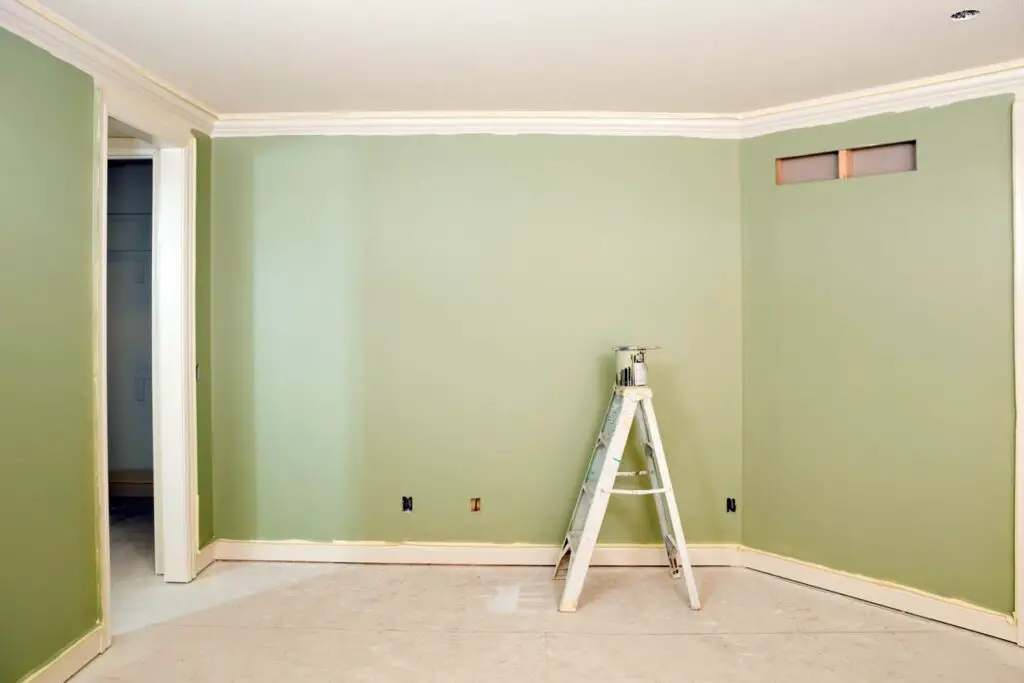
Conclusion
The journey of painting the interior of a house is an artful fusion of patience, precision, and transformation. As the final brushstroke is applied, the culmination of careful planning and dedicated effort becomes evident. While the question of how long it takes to paint a house is multifaceted, the experience itself holds its own rewards.
Throughout this exploration, we’ve uncovered that the timeline is a reflection of the meticulous steps undertaken to achieve a flawless finish. From selecting colors that resonate with your style to navigating the intricacies of preparation and application, each stage contributes to the masterpiece that is your newly painted interior.
Beyond the practical considerations, painting a house’s interior becomes an embodiment of creativity, a testament to a homeowner’s vision brought to life. The process is as vital as the outcome, revealing the beauty that unfolds with every layer of paint. So, as you embark on this transformative journey, remember that the time invested is a tribute to the harmony of aesthetics and functionality, resulting in a space that truly feels like home.



